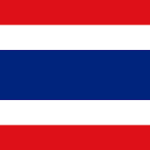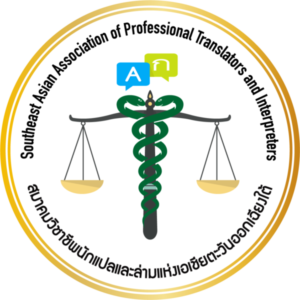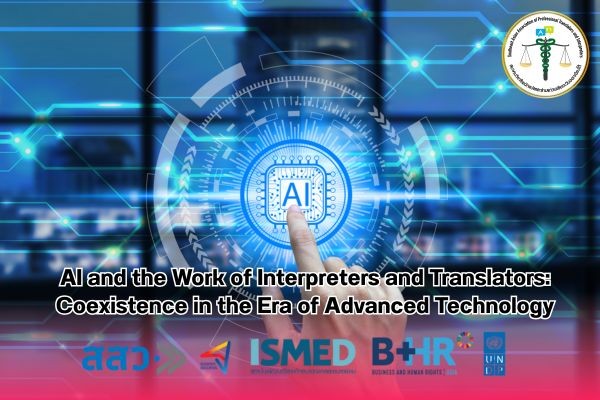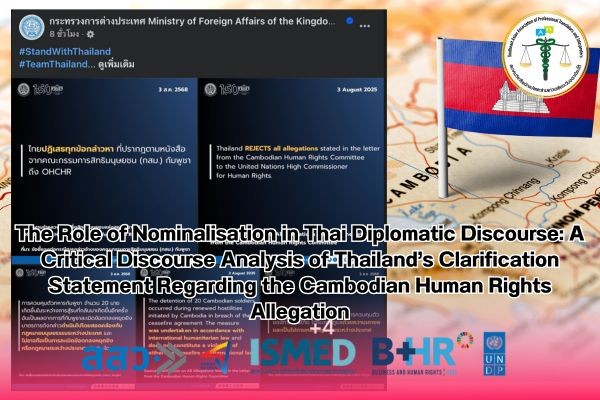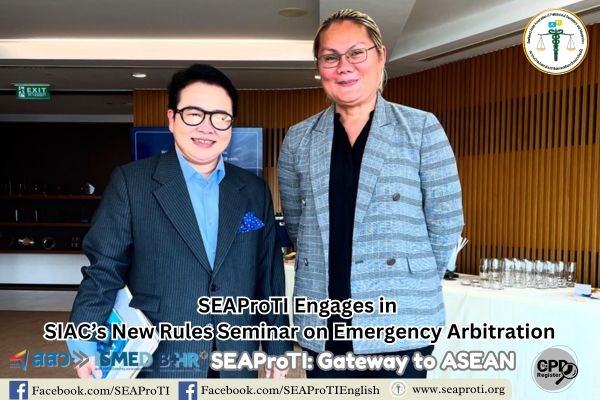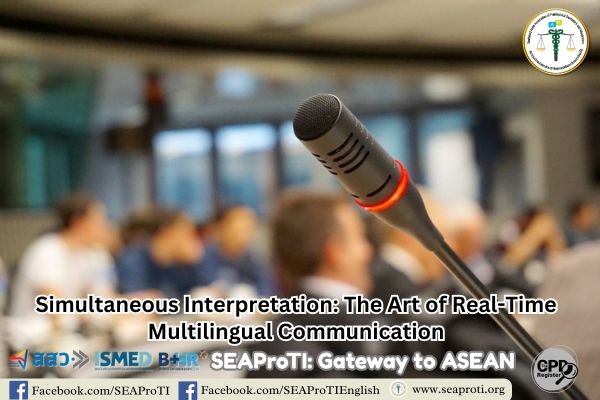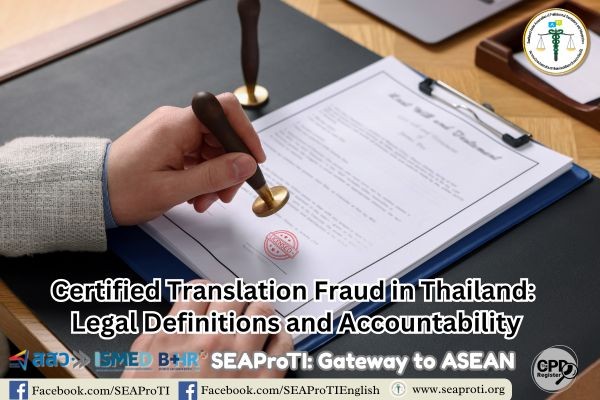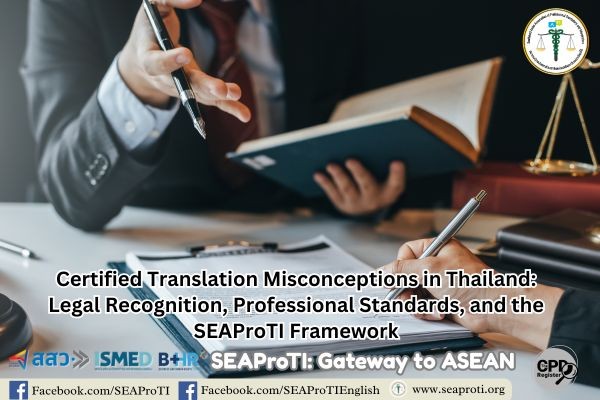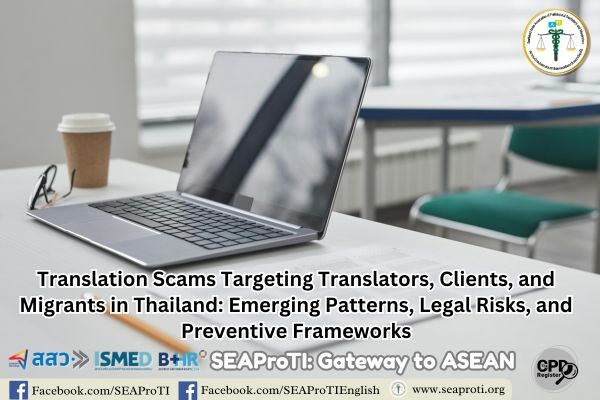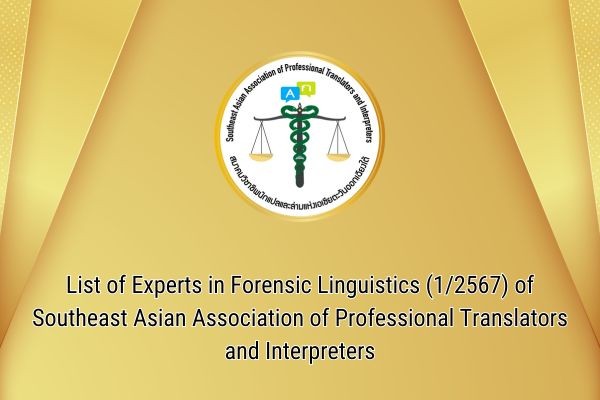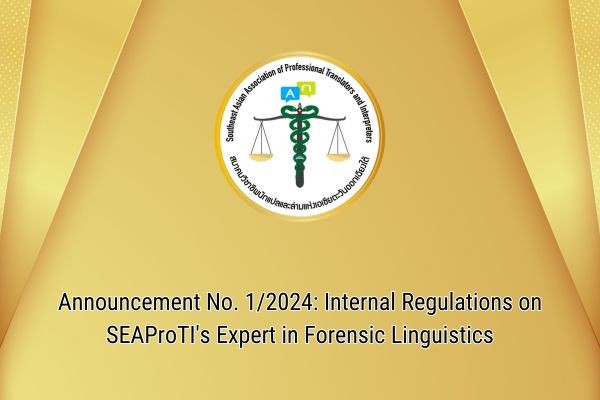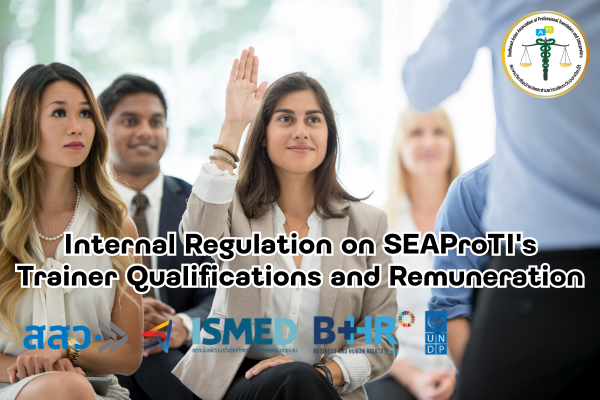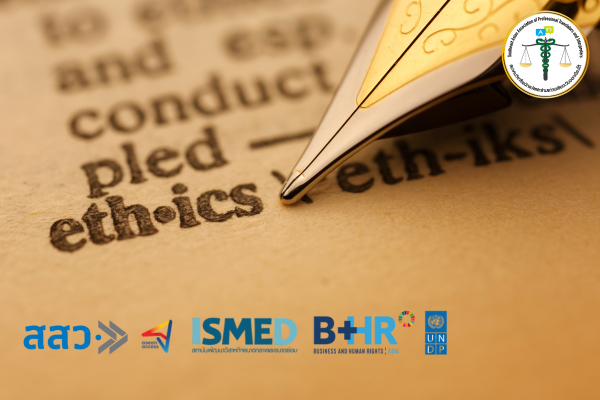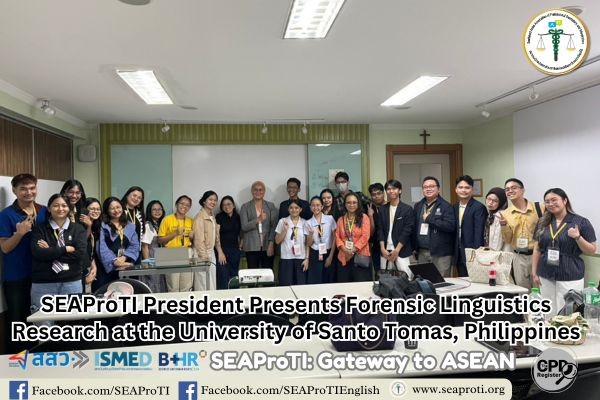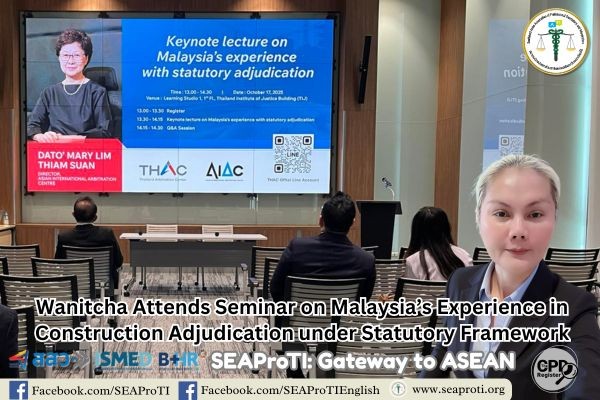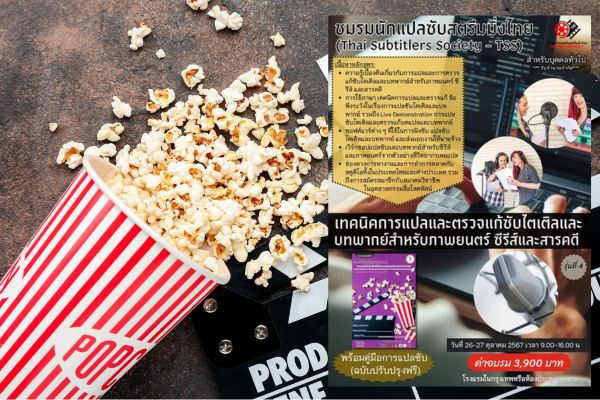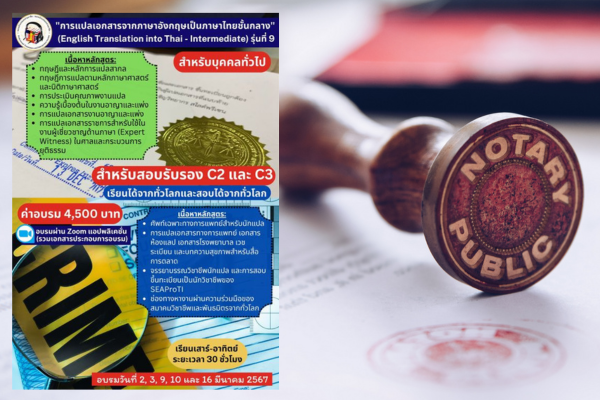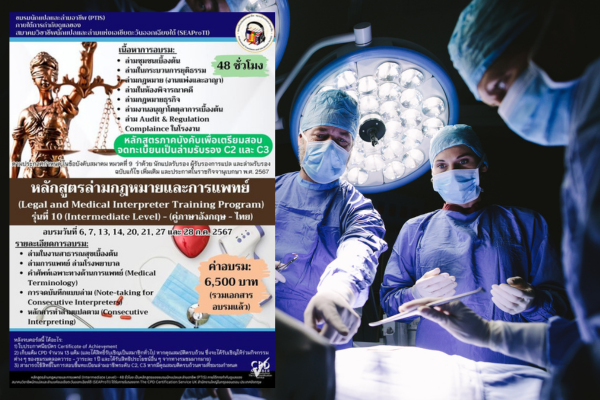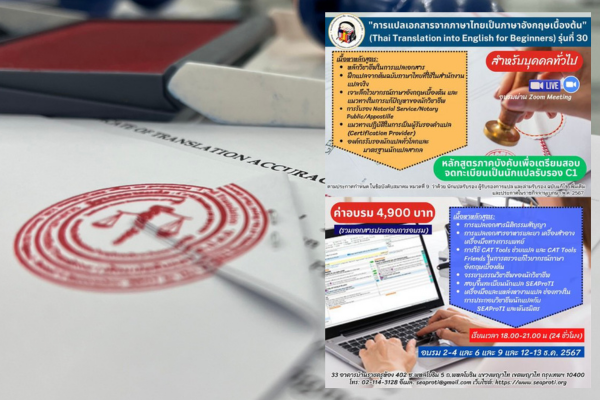AI and the Work of Interpreters and Translators: Coexistence in the Era of Advanced Technology
12 August 2025, Bangkok – The development of Artificial Intelligence (AI) has played a significant role in the field of translation and interpreting, particularly in machine translation and real-time subtitling, which have become increasingly accurate and efficient. However, in high-stakes situations—such as business negotiations, court proceedings, and medical contexts—AI still cannot fully replace human professionals, as it lacks the ability to grasp deep contextual meaning, cultural nuances, and to adjust tone and emotion appropriately (Koponen, 2021; Moorkens, 2022).
Human Strengths That AI Cannot Replace
Human translators and interpreters possess the ability to build trust and deliver messages in a complete, culturally appropriate manner, which AI cannot yet fully achieve (Pym, 2021). This is particularly crucial in high-level translation tasks such as legal literature or specialized technical manuals, which require extensive interpretation and deep subject-matter expertise.
Impact on the Profession in the AI Era
According to the U.S. Bureau of Labor Statistics (2023), global employment for translators and interpreters continues to grow, even with the widespread adoption of AI. This suggests that AI functions more as an assistive tool rather than a full replacement. AI can reduce the workload of data processing and increase productivity, but human skills remain central in contexts that demand accuracy and cultural sensitivity (Garcia, 2015).
Challenges from Real-World Experience
Live interpreting presents challenges that AI cannot yet manage effectively, such as background noise, pressure in real-time situations, and the need to respond flexibly to sudden changes in communication. Furthermore, translation errors in high-risk contexts—such as health communication during the COVID-19 crisis—can have life-threatening consequences, underscoring the need for translators and interpreters who truly understand the culture and target audience (Chan, 2021).
Adapting as a Modern Translator or Interpreter
To remain relevant in the evolving technological landscape, translators and interpreters should:
- Learn and utilize digital tools, such as Computer-Assisted Translation (CAT) tools and AI systems.
- Develop specialized expertise, for example, in legal or medical interpreting and technical translation.
- Engage in professional networks and training programs to share experiences and ensure quality standards.
Essential Skills in the AI Era
- Bilingual and bicultural competence
- Digital literacy and adaptability
- Human-centered communication and relationship-building in critical situations
Conclusion
Although AI is becoming increasingly powerful and prominent in translation and interpreting, the cultural value, emotional depth, and trust-building ability of human professionals remain irreplaceable. Adapting to technological change and integrating AI as an assistive tool will allow translators and interpreters to maintain their essential roles in the age of advanced technology.
References
- Chan, S. W. (2021). The role of translation in public health crises: Lessons from COVID-19. Linguistica Antverpiensia, New Series–Themes in Translation Studies, 20, 45–62.
- Garcia, I. (2015). Cloud marketplaces: Procurement of translators in the age of social media. The Journal of Specialised Translation, 23, 18–38.
- Koponen, M. (2021). Machine translation post-editing in practice: Processes, strategies and networks. Translation Spaces, 10(1), 1–26.
- Moorkens, J. (2022). Ethics in the AI era: Machine translation, post-editing, and professional practice. Perspectives: Studies in Translation Theory and Practice, 30(1), 1–16.
- Pym, A. (2021). Translation solutions for many languages: Histories of a flawed dream. Routledge.
- U.S. Bureau of Labor Statistics. (2023). Interpreters and translators: Occupational outlook handbook. Retrieved from https://www.bls.gov/ooh/media-and-communication/interpreters-and-translators.htm
About SEAProTI Certified Translators, Certification Providers, and Interpreters
The Southeast Asian Association of Professional Translators and Interpreters (SEAProTI) has published official guidelines and eligibility criteria for individuals seeking registration as Certified Translators, Translation Certification Providers, and Certified Interpreters under Chapter 9 and Chapter 10 of the Royal Thai Government Gazette, issued by the Secretariat of the Cabinet, Office of the Prime Minister, on 25 July 2024 (Vol. 141, Part 66 Ng, p. 100). Full text available at: The Royal Thai Government Gazette
Headquarters: 33 Baan Rajakhru Building, Room 402, Soi Phahonyothin 5, Phahonyothin Road, Phayathai Sub-district, Phayathai District, Bangkok 10400 Email: hello@seaproti.com Tel: (+66) 2-114-3128 (Office Hours: 9.00–17.00 HRs/Monday to Friday)
AI กับงานล่ามและนักแปล: การอยู่ร่วมกันในยุคเทคโนโลยีขั้นสูง
12 สิงหาคม 2568, กรุงเทพมหานคร – การพัฒนาเทคโนโลยีปัญญาประดิษฐ์ (Artificial Intelligence: AI) ได้เข้ามามีบทบาทสำคัญในวงการการแปลและการล่าม ทั้งในรูปแบบการแปลอัตโนมัติ (machine translation) และการแปลแบบเรียลไทม์ (real-time subtitling) ที่มีความแม่นยำและรวดเร็วมากขึ้น อย่างไรก็ตาม ในสถานการณ์ที่มีความสำคัญสูง เช่น การเจรจาทางธุรกิจ ศาล และการแพทย์ AI ยังไม่สามารถแทนที่มนุษย์ได้อย่างสมบูรณ์ เนื่องจากยังไม่สามารถเข้าใจบริบทเชิงลึก จับนัยทางวัฒนธรรม หรือปรับอารมณ์น้ำเสียงให้เหมาะสมกับสถานการณ์ได้ (Koponen, 2021; Moorkens, 2022)
จุดแข็งของมนุษย์ที่ AI ทดแทนไม่ได้
นักแปลและล่ามมนุษย์มีความสามารถในการสร้างความไว้วางใจ (trust-building) และถ่ายทอดความหมายได้ครบถ้วน เหมาะสมต่อผู้รับสารในบริบททางสังคมและวัฒนธรรม ซึ่งเป็นสิ่งที่ AI ยังไม่สามารถทำได้อย่างเต็มรูปแบบ (Pym, 2021) โดยเฉพาะในงานแปลระดับสูง เช่น วรรณกรรมทางกฎหมาย หรือคู่มือเทคนิคเฉพาะ ที่มีความซับซ้อนสูงและต้องการการตีความอย่างรอบด้าน
ผลกระทบต่ออาชีพในยุค AI
ข้อมูลจาก U.S. Bureau of Labor Statistics (2023) ชี้ให้เห็นว่ายอดจ้างงานในอาชีพนักแปลและล่ามทั่วโลกมีแนวโน้มเพิ่มขึ้น แม้ AI จะถูกนำมาใช้อย่างแพร่หลาย ซึ่งสะท้อนว่า AI เป็นเครื่องมือเสริม มากกว่าการทดแทนแรงงานมนุษย์ การประยุกต์ใช้ AI สามารถลดภาระงานด้านการประมวลผลข้อมูลและเพิ่มความเร็วในการทำงาน แต่ทักษะของมนุษย์ยังคงเป็นหัวใจสำคัญในงานที่ต้องการความถูกต้องและความละเอียดอ่อนทางวัฒนธรรม (Garcia, 2015)
ความท้าทายจากประสบการณ์จริง
การล่ามสดยังมีอุปสรรคที่ AI ไม่สามารถรับมือได้ดี เช่น เสียงรบกวน ความกดดันในสถานการณ์เฉพาะหน้า และการตอบสนองต่อการเปลี่ยนแปลงของคู่สนทนา นอกจากนี้ ความผิดพลาดในการแปลในบริบทที่มีความเสี่ยงสูง เช่น การแปลข้อมูลทางการแพทย์ในช่วงวิกฤตโควิด-19 อาจส่งผลกระทบต่อชีวิตและความปลอดภัยของผู้รับสาร ซึ่งเน้นย้ำถึงความจำเป็นของนักแปลและล่ามที่เข้าใจวัฒนธรรมและกลุ่มเป้าหมายอย่างแท้จริง (Chan, 2021)
การปรับตัวของนักแปลและล่ามยุคใหม่
เพื่อตอบสนองต่อการเปลี่ยนแปลงทางเทคโนโลยี นักแปลและล่ามควร
- เรียนรู้และใช้เครื่องมือดิจิทัล เช่น ซอฟต์แวร์ช่วยแปล (CAT tools) และระบบ AI
- พัฒนาทักษะเฉพาะทาง เช่น ล่ามด้านกฎหมาย ล่ามการแพทย์ หรือแปลเอกสารด้านเทคนิค
- เข้าร่วมเครือข่ายวิชาชีพและหลักสูตรฝึกอบรม เพื่อแลกเปลี่ยนประสบการณ์และควบคุมคุณภาพงานแปล
ทักษะสำคัญในยุค AI
- ความชำนาญสองภาษาและเข้าใจวัฒนธรรม (bilingual and bicultural competence)
- การปรับตัวและใช้เทคโนโลยีดิจิทัล (digital literacy)
- การสื่อสารเชิงมนุษย์และสร้างความสัมพันธ์ (human-centered communication)
บทสรุป
แม้ AI จะมีศักยภาพสูงและมีบทบาทเพิ่มขึ้นในวงการแปลและล่าม แต่คุณค่าทางวัฒนธรรม อารมณ์ และการสร้างความเชื่อใจระหว่างผู้สื่อสารยังเป็นพื้นที่ที่เทคโนโลยีไม่สามารถแทนที่มนุษย์ได้ การปรับตัวและการใช้ AI เป็นเครื่องมือเสริมจะช่วยให้นักแปลและล่ามสามารถรักษาบทบาทสำคัญในยุคเทคโนโลยีขั้นสูงได้
เอกสารอ้างอิง (References)
- Chan, S. W. (2021). The role of translation in public health crises: Lessons from COVID-19. Linguistica Antverpiensia, New Series–Themes in Translation Studies, 20, 45–62.
- Garcia, I. (2015). Cloud marketplaces: Procurement of translators in the age of social media. The Journal of Specialised Translation, 23, 18–38.
- Koponen, M. (2021). Machine translation post-editing in practice: Processes, strategies and networks. Translation Spaces, 10(1), 1–26.
- Moorkens, J. (2022). Ethics in the AI era: Machine translation, post-editing, and professional practice. Perspectives: Studies in Translation Theory and Practice, 30(1), 1–16.
- Pym, A. (2021). Translation solutions for many languages: Histories of a flawed dream. Routledge.
- U.S. Bureau of Labor Statistics. (2023). Interpreters and translators: Occupational outlook handbook. Retrieved from https://www.bls.gov/ooh/media-and-communication/interpreters-and-translators.htm
เกี่ยวกับนักแปลรับรอง ผู้รับรองการแปล และล่ามรับรองของสมาคมวิชาชีพนักแปลและล่ามแห่งเอเชียตะวันออกเฉียงใต้
สมาคมวิชาชีพนักแปลและล่ามแห่งเอเชียตะวันออกเฉียงใต้ (SEAProTI) ได้ประกาศหลักเกณฑ์และคุณสมบัติผู้ที่ขึ้นทะเบียนเป็น “นักแปลรับรอง (Certified Translators) และผู้รับรองการแปล (Translation Certification Providers) และล่ามรับรอง (Certified Interpreters)” ของสมาคม หมวดที่ 9 และหมวดที่ 10 ในราชกิจจานุเบกษา ของสำนักเลขาธิการคณะรัฐมนตรี ในสำนักนายกรัฐมนตรี แห่งราชอาณาจักรไทย ลงวันที่ 25 ก.ค. 2567 เล่มที่ 141 ตอนที่ 66 ง หน้า 100 อ่านฉบับเต็มได้ที่: นักแปลรับรอง ผู้รับรองการแปล และล่ามรับรอง
สำนักงานใหญ่: อาคารบ้านราชครุ เลขที่ 33 ห้อง 402 ซอยพหลโยธิน 5 ถนนพหลโยธิน แขวงพญาไท เขตพญาไท กรุงเทพมหานคร 10400 อีเมล: hello@seaproti.com โทรศัพท์: (+66) 2-114-3128 (เวลาทำการ: วันจันทร์–วันศุกร์ เวลา 9.00–17.00 น.)
